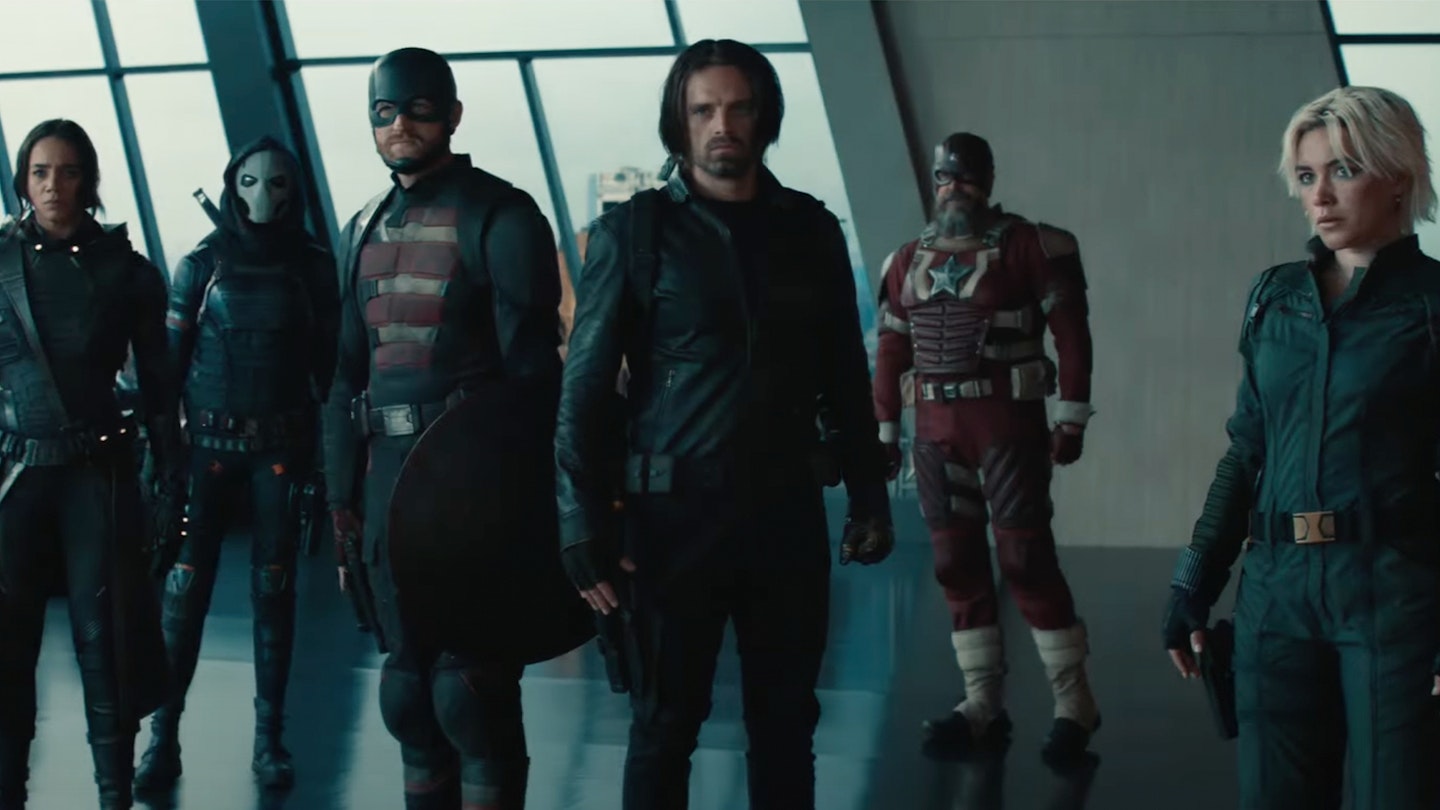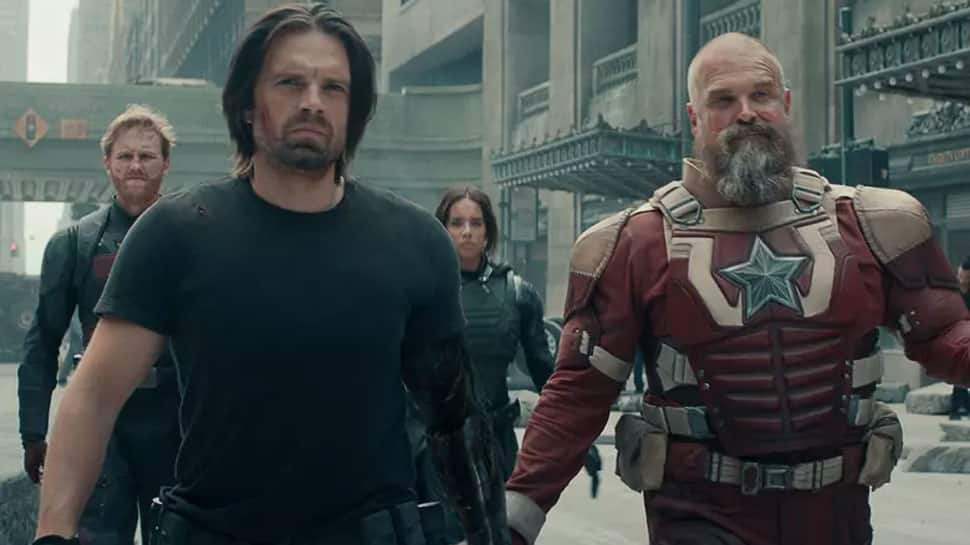There was a time when every new Marvel film release was a significant event. Trailers generated substantial views, online enthusiasm was high, and editorial teams competed fiercely to attend press screenings for the latest MCU installment. However, that was before the conclusion of the Thanos era, before superhero fatigue set in, and before an era where Marvel seemed uncertain about its direction. Following multiple artistic and commercial failures, the MCU must now establish a clear guiding principle. With the announced end of the Multiverse Saga and the upcoming releases of films featuring the Fantastic Four and X-Men, it may be that a thorough restructuring could benefit this chaotic situation. Departing from the trend of visually overwhelming productions and multiverse storylines in recent studio output, Thunderbolts (with the important note at the end) adopts a more grounded approach, which is both surprising and refreshing.
Let us be honest: few were expecting much from Thunderbolts. On paper, the film does not inspire high expectations, neither in terms of its concept nor its characters, nor even with its director, Jake Schreier, who is largely unknown to the general public (he made a series on Netflix). He represents everything that the public criticizes about the MCU: the feeling of reaching for straws. And yet, it is precisely because this film came with so few expectations that it surprises. Yes, Thunderbolts is not just another superhero movie; it’s a flick that arrives unexpectedly. What do you do with all these superheroes introduced since the end of Avengers: Endgame and who do not really interest the general public? Yelena Belova, Red Guardian, John Walker, Ghost, Bucky Barnes, Taskmaster – how many of these names are truly familiar to you unless you’re a die-hard MCU or Marvel Comics fan? Originally in the comics, the Thunderbolts were a cynical response to an era without Avengers: villains seeking redemption with more glamorous names than those mentioned earlier. Norman Osborn, aka the Green Goblin, Venom, Baron Zemo – except in the MCU, we have to work with what is available.
CHARMING LOSERS
Jake Schreier, the director known for the excellent Beef series, along with the Pearson/Calo writing duo, transform this perceived weakness into a strength by fully embracing their “imperfect” cast. Above all, they leverage themes of humanity, depression, and dysfunctional solidarity to enhance the narrative. The film features three super soldiers, a depressed spy, an amnesiac killer, a less conventional Captain America figure, and a divine power entity. Thunderbolts represents Marvel’s commitment to telling stories about marginalized characters: those who are rejected, lost, or forgotten. This casting choice is significant as it reflects Marvel’s interest in exploring less idealized figures with more ambiguity. Characters in Thunderbolts illustrate the aftermath of the Avengers era, showcasing the scars rather than representing perfect models. One of the film’s main strengths lies in its departure from the typical MCU formula.
The most intriguing character among these is the one who has received the least attention in teasers and trailers: Sentry. He is central to both the plot and the film’s appeal. Played by actor Lewis Pullman, Sentry represents a dark interpretation of the Superman archetype. This overwhelmingly powerful figure is portrayed as a product of the military-scientific complex, suffering from increasing mental instability. Although not cast as the primary antagonist, Sentry embodies the most troubling aspect of the narrative, reflecting the failure of efforts to create god-like beings at will—a scenario that has become commonplace in the absence of the Avengers. His presence is disquieting and almost apocalyptic, disrupting the established narrative equilibrium. Pullman’s performance is tense and imbued with a notable vulnerability that is highly appreciated.
BASIC. ESSENTIAL.
Jake Schreier succeeds where other directors have failed by establishing a tone primarily through a more grounded staging. Yes, there are many special effects, I particularly like the effect of marked shadows on the ground generated by Sentry’s powers, which also references the shadows left by the bombing of Hiroshima; however, the main action scenes were done using practical effects. Marvel did not hesitate to promote this either, even though some scenes could have been longer. For instance, Florence Pugh’s leap into the void from a building in Kuala Lumpur was actually performed by her but is insufficiently highlighted in the film, reduced to just one shot seen in the trailer. If you’re going to do it properly, why not give more time to this stunt sequence?
After careful consideration, the film does not exhibit revolutionary formal qualities; however, its action sequences are clear, readable, meticulously choreographed, and effectively utilize a cast that I believe is quite engaged. The group dynamics surprisingly function well despite an apparent hierarchy among characters (Yelena leading, Ghost largely underutilized). This disparity, rather than being problematic, actually reinforces the film’s message: that of an imbalanced collective striving not for glory but merely to stand. And this is precisely what the film conveys—the desire to do things correctly. It does not aspire to grand ambitions but executes its purpose relatively well. The film is not without flaws; it experiences a noticeable slowdown in pacing during its second half, and certain characters like Bucky Barnes remain too distant or underutilized. Nonetheless, overall, it represents a welcome change. In fact, Thunderbolts does not aim to entertain at all costs; instead, it seeks to reintroduce meaning into an universe that desperately needed it.
SPOILER ALERT ACTIVATED
We will now proceed to the spoiler section and discuss the asterisk that Marvel has heavily highlighted. Briefly, at the end of the film, it is revealed that these Thunderbolts are the new Avengers, appointed by Valentina Allegra de Fontaine, who in a way has taken on a role similar to Nick Fury’s. Meanwhile, Nick Fury himself has disappeared from the MCU, which raises some concerns… The film thoroughly explores its premise by presenting the Thunderbolts as wish-fulfilling versions of the Avengers, with their very name being questioned for copyright issues during the first post-credits scene. It is evident that they will not remain official Avengers for long, since the second post-credits scene shows the arrival of the Fantastic Four on Earth from another Multiverse. My theory, which aligns with many others’, is confirmed: the Fantastic Four have escaped their timeline due to Galactus and arrived in the MCU. I am convinced that they will become the new leaders of the MCU, with numerous upcoming films focusing on them. It appears clear to me that Pedro Pascal will take over Robert Downey Jr.’s popularity as he stars in future installments like “Doomsday” and “Secret Wars.” This marks an opportunity to start anew after 15 years of the MCU, removing superheroes who did not perform well at the box office and initiating a new era with the Fantastic Four, the new X-Men, etc. It seems quite evident, doesn’t it?
Thunderbolts stands out in the Marvel Cinematic Universe (MCU) as a film that, against expectations, brings a sense of order to the surrounding chaos. It does not claim to be a miracle or a revolution but rather presents a genuine proposal within an environment where creativity seems stagnant. By focusing on its less prominent characters and an uneven cast, the film offers a more human, serious, and at times artisanal approach. This vulnerability, without pretense, allows Marvel to regain some semblance of soul. The movie avoids multiverse complications and unnecessary cameos, instead depicting flawed individuals struggling to survive in a world that no longer values them. In this context, Thunderbolts represents what audiences have been waiting for: Marvel acknowledging its shortcomings rather than perpetually chasing past glories. While it may not match the grandeur of Avengers, it is precisely this distinction that makes it work.
Have any thoughts?
Share your reaction or leave a quick response — we’d love to hear what you think!



